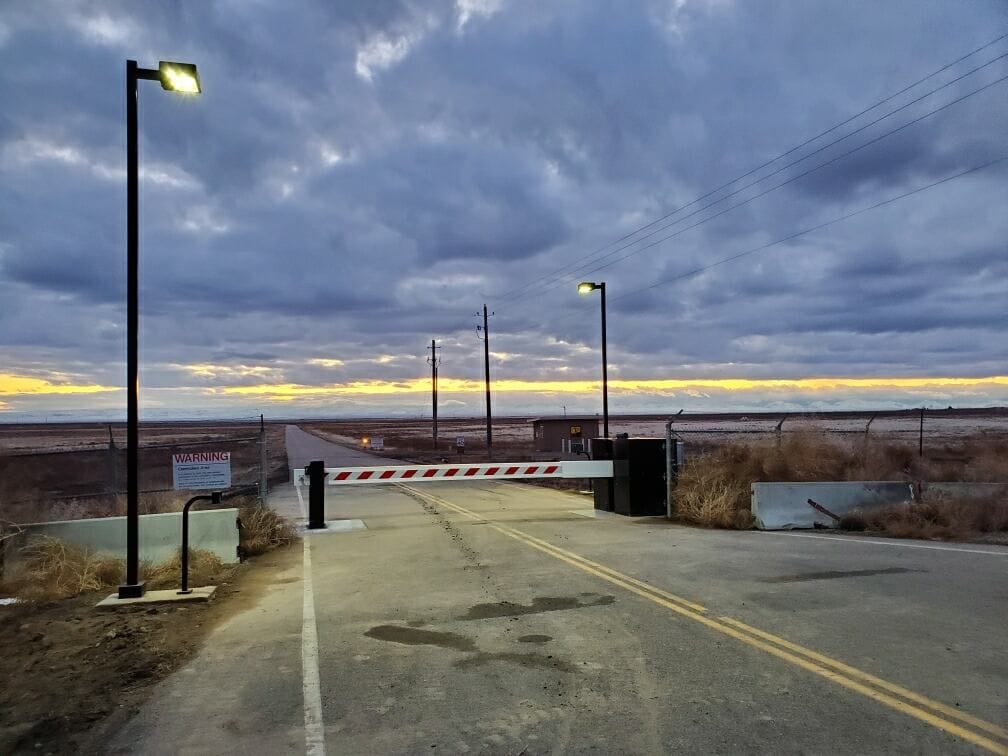Drop Arm Barrier Systems: A Guide to Controlled Access Point Security
A drop arm barrier is a horizontal security gate designed to regulate vehicle access at controlled entry and exit points. Unlike basic boom gates or chain-link setups, drop arms are often constructed with reinforced steel and built to physically stop unauthorized vehicles. Many are crash-rated, meaning they’ve undergone rigorous testing to ensure they can withstand high-impact collisions. These barriers are typically installed horizontally across the road surface, dropping to block traffic and raising to allow passage. This makes them ideal for tight urban spaces, government zones, and commercial perimeters where both security and traffic flow are priorities.
Depending on operational demands, drop arm systems may be powered hydraulically, electrically, or pneumatically, each offering different benefits in terms of response time and durability. For high-risk areas like military bases or embassies, a K8 drop arm barrier is often preferred, capable of stopping a 7.5-ton truck traveling at 50 km/h. Beyond their stopping power, these barriers serve as visible deterrents, signaling that unauthorized access will be met with resistance. Whether you’re aiming to prevent vehicular threats or manage restricted traffic access, drop arms offer a compact, high-performance solution that blends force with control.
Key Environments Where Drop Arm Barriers Offer the Most Protection and Efficiency
Drop arm barriers can be customized and scaled based on the unique demands of various facility types. Below are the environments where their functionality shines:
- Military Installations: Secure perimeters where vehicular threats, both intentional and accidental, must be neutralized rapidly.
- Airports and Seaports: Protect access roads to runways, cargo loading docks, and customs areas from unauthorized vehicles.
- Government Buildings: Control vehicular access at sensitive sites such as embassies, courthouses, and secure data facilities.
- Correctional Facilities: Manage prison access and control inmate transport with immediate drop arm deployment.
- Commercial and Industrial Campuses: Secure loading bays, manage entry times, and create layered security systems with integrated access control.
- Event and Crowd Control Zones: Temporarily block or redirect traffic during public events while maintaining controlled access for emergency vehicles.
Whether installed permanently or temporarily, these barriers are essential for any environment where managing vehicle access and ensuring high-level security is a daily necessity.
Understanding Drop Arm Barrier Design: Features That Impact Performance and Security
Choosing the right drop arm barrier starts with understanding how its design impacts performance, safety, and operational efficiency. Since every facility has a unique threat profile, ranging from occasional vehicle access to constant high-risk exposure, your selection should be based on key technical features. One of the most critical is the crash rating. Systems are typically rated K4, K8, or K12, which indicate the vehicle speed and mass they can successfully stop. For example, a K8 drop arm barrier is designed to halt a 15,000-pound truck traveling at 40 mph, making it suitable for high-security installations like embassies or data centers.
Another important consideration is the operating mechanism. Drop arms can be hydraulic, electric, or manual, each with its pros and cons. Hydraulic systems offer fast and powerful operation, while electric types are quieter and more energy-efficient. The barrier’s raising time, usually between three to five seconds for premium models, also affects how quickly a site can respond to incoming threats. In busy facilities, a high-duty cycle is essential; this tells you how many times the barrier can function daily without overheating or degrading.
Modern drop arm barriers also integrate with access control technologies such as RFID badge readers, license plate recognition (LPR), or biometric systems. This integration allows seamless and intelligent vehicle authorization. Finally, don’t overlook weather resistance. A reliable system must be built to withstand harsh elements like rain, snow, or extreme temperatures. Corrosion-proof materials, sealed electrical components, and drainage design all contribute to long-term durability and operational readiness.
How to Integrate Drop Arm Barriers Into Your Access Control Ecosystem
Integrating a drop arm barrier into your overall security network can transform it from a passive deterrent to an active responder. Here’s how you do it:
- Assess Your Risk and Access Needs: Start by identifying entry/exit points, vehicle types, and peak hours. Are you guarding against unauthorized entry, or crash attacks?
- Select the Right Barrier Model: Choose a drop arm barrier that aligns with your threat level, consider options like K8-rated arms for higher risk.
- Connect with Surveillance Systems: Use license plate recognition cameras or biometric checkpoints to feed data into the barrier control.
- Program Access Protocols: Set up automation rules: authorized vehicles lower the arm, unknown vehicles trigger alerts or activate the barrier.
- Test and Train Staff: Conduct routine tests and emergency simulations to train operators and identify system weaknesses.
- Implement Fail-Safe Measures: Include battery backups and manual overrides to keep the system operational in power outages or cyberattacks.
Smart integration turns a drop arm from a mechanical tool into a vital part of your security intelligence system.
Crash Ratings, Certifications, and Common Questions About Compliance
When it comes to high-security access control, not all drop arm barriers are created equal. Understanding crash ratings and certifications is key to ensuring your barrier system can truly withstand a threat. Whether you’re outfitting a government facility or upgrading a private entrance, knowing how compliance works, and what standards to look for, can help you make the right investment. Below, we answer the most common questions about barrier performance, testing, and regulatory requirements.
What is a crash rating, and why does it matter?
Crash ratings define how much impact a barrier can withstand. For example, a K8 drop arm barrier is designed to stop a 7.5-ton truck traveling at 50 km/h. This is essential for high-risk zones like federal buildings or urban checkpoints.
Who sets the standards for drop arm barriers?
Organizations like ASTM International (ASTM F2656) and the U.S. Department of State define the standards. The old DOS “K-ratings” are now largely replaced by ASTM’s M-ratings, but both are still in reference use.
Are certifications mandatory?
For government or military installations, yes. Private sectors often follow these ratings for best practices and insurance compliance.
Can I retrofit my existing gates with a crash-rated arm?
In most cases, no. Crash-rated barriers must be installed with reinforced foundations, specific anchoring, and tested mechanisms.
What happens in case of a power failure?
Premium drop arms come with battery backup or manual lowering options to ensure functionality during emergencies.
Always confirm certifications when purchasing to avoid sub-par or non-compliant systems.
Common Maintenance Concerns and How Drop Arm Barriers Deliver Long-Term ROI
While drop arm barrier systems are known for their durability and high-performance standards, many facilities fall short when it comes to maintenance. Security teams often install these crash-rated systems and assume they’ll operate flawlessly for years. However, like any mechanical infrastructure, drop arm barriers require consistent inspection and upkeep. Without a structured maintenance plan, even the strongest systems can falter during a real-world threat scenario, putting lives, assets, and operations at risk.
The consequences of poor maintenance can range from minor delays to total system failure during emergencies. Several issues commonly affect drop arm barriers when servicing is neglected:
- Rust or corrosion: Exposed arms, especially those installed outdoors, are vulnerable to moisture and air pollutants. Over time, untreated corrosion can weaken the structure and compromise stopping power.
- Hydraulic system failures: Hydraulic-powered barriers rely on fluid pressure to raise and lower the arm efficiently. Without regular checks, oil leaks or clogged lines can reduce lifting speed or stop it altogether.
- Sensor inaccuracies: Modern drop arms often include sensors to detect vehicle presence or signal faults. Dust, insects, or debris buildup can lead to false alarms, unresponsive actions, or unsafe operation.
- Electrical malfunctions: In areas prone to storms or unreliable power grids, a system without tested backup power may fail just when it’s needed most, unless proper fail-safe features like battery backups or manual override systems are routinely tested.
To prevent these issues, facilities should follow a proactive maintenance strategy. This involves a combination of periodic inspections and real-time diagnostics. Key components of an effective drop arm maintenance plan include:
Monthly functionality tests: Operate the system through several raise-and-lower cycles and verify sensor responses and command input timing.
- Quarterly cleaning and lubrication: Dust off all control boxes, clean sensor lenses, and apply lubricant to pivot points, hydraulic pistons, and locking arms to ensure smooth mechanical operation.
- Annual structural inspections: Engage certified professionals to check for internal damage, assess foundation anchoring, and verify compliance with crash-test standards (especially if the barrier is K8 or K12 rated).
- Digital system monitoring: Many modern drop arms include diagnostics software. Activate logs and alerts that track system behavior and warn of mechanical or electrical anomalies before they escalate into failures.
Long-term, a well-maintained drop arm system delivers strong financial and operational benefits. For one, facilities can significantly reduce emergency repair expenses, since problems are identified early and fixed under routine servicing. Another advantage is maximized system uptime, essential for locations like embassies, airports, or data centers where vehicle access must remain secure and responsive at all times. Moreover, insurance providers often offer better terms to clients who maintain certified logs of safety and system upkeep.
In addition to minimizing costs, proper maintenance extends the system’s service life, often well beyond the manufacturer’s stated warranty. A drop arm barrier that’s cleaned, oiled, inspected, and updated regularly can perform reliably for a decade or more. Most importantly, this vigilance ensures your facility maintains the integrity of its first line of defense.
Simply put, installing a drop arm barrier is only the beginning. Its long-term value, and ability to function during a real threat, depends entirely on how consistently it is cared for. A few hours of planned maintenance each month can mean the difference between system failure and security success.
Secure Your Perimeter with Proven Drop Arm Barrier Technology from Black Security Products
Choosing the right drop arm barrier is only part of the equation, partnering with a provider who understands the stakes is what makes the real difference. At Black Security Products (BSP), we deliver more than just hardware; we provide security expertise, precision engineering, and a commitment to long-term system performance.
Whether you’re fortifying a federal checkpoint, managing controlled access at a data center, or protecting a high-traffic commercial facility, BSP ensures every drop arm solution is built to withstand impact, function intelligently, and integrate seamlessly with your security infrastructure. From K8-rated crash barriers to fully automated systems with biometric control, we help you take full command of your vehicle access points.
Ready to upgrade your access control with real-world stopping power? Contact ustoday for a no-obligation consultation, system design review, or crash-rated equipment quote. Experience the difference of certified protection, backed by decades of perimeter security innovation.


